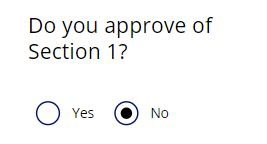Exchange Hybrid Mailbox Move - Corruption Due To Missing Security Principals (ACL issues) - TooManyBadItemsPermanentException
UPDATE 14 Jan 2020
---------------------
Microsoft have introduced DCS (Data Consistency Scoring) which is planned to supersede the Bad Item Limit count you declare on a migration.
There are four grades of DCS; Perfect, Good, Investigate and Poor. You can complete the migration for all grades, except Poor.
Importantly, this now means they can now properly differentiate between a corruption in mailbox data and missing permissions or security principal which couldn't be set on the target mailbox. Previously you had to raise the Bad Item Limit to compensate for security principals and genuine corruption combined; this should no longer be the case.
For now, DCS will be used by default where you don't set a Bad Item Count. If you do specify a Bad Item Count, DCS will not be used
See the below links for more details:
https://techcommunity.microsoft.com/t5/exchange-team-blog/improving-migrations-using-data-consistency-scoring/ba-p/1105920
https://docs.microsoft.com/en-us/exchange/mailbox-migration/track-prevent-data-loss-dcs
---------------------
Here is an example of what is output to screen:
https://github.com/benjaminjamesowens/ReportExchangeMailboxMigrationACLExceptions/blob/main/ReportExchangeMailboxMigrationACLExceptions.ps1
---------------------
Microsoft have introduced DCS (Data Consistency Scoring) which is planned to supersede the Bad Item Limit count you declare on a migration.
There are four grades of DCS; Perfect, Good, Investigate and Poor. You can complete the migration for all grades, except Poor.
Importantly, this now means they can now properly differentiate between a corruption in mailbox data and missing permissions or security principal which couldn't be set on the target mailbox. Previously you had to raise the Bad Item Limit to compensate for security principals and genuine corruption combined; this should no longer be the case.
For now, DCS will be used by default where you don't set a Bad Item Count. If you do specify a Bad Item Count, DCS will not be used
See the below links for more details:
https://techcommunity.microsoft.com/t5/exchange-team-blog/improving-migrations-using-data-consistency-scoring/ba-p/1105920
https://docs.microsoft.com/en-us/exchange/mailbox-migration/track-prevent-data-loss-dcs
---------------------
About midway through 2016, a change was introduced to Exchange Online whereby if a security principal could not be successfully validated/mapped to an Exchange Online object, it would be marked as a bad item. Previously, the behaviour was that invalid permissions would simply be ignored, and administrators were then left to wonder why some permissions no longer worked after the migration. With this new behaviour, corrupt/invalid permissions are now logged so that administrators will know that there are problems with permissions. The following article covers this in more detail: https://blogs.technet.microsoft.com/exchange/2017/05/30/toomanybaditemspermanentexception-error-when-migrating-to-exchange-online/?replytocom=310635#respond
The result is that users who were granted mailbox permissions but have since left the organisation and had their AD user account deleted will show as a corrupt item when that mailbox is migrated to Exchange Online. These errors were previously hidden from the log, but they're not marked as corruptions which means you need to raise that corruption level for your mailbox move/s.
In order to decipher which corruptions are genuine are which are related to ACL issues, you can run the following script. The script can be run against a migration batch in PowerShell for Exchange Online to determine and output which mailbox migrations have genuine corruptions and require investigation, and which do not.
3 files will be output to directory specified with a subfolder with a timestamp prepended.
The result is that users who were granted mailbox permissions but have since left the organisation and had their AD user account deleted will show as a corrupt item when that mailbox is migrated to Exchange Online. These errors were previously hidden from the log, but they're not marked as corruptions which means you need to raise that corruption level for your mailbox move/s.
In order to decipher which corruptions are genuine are which are related to ACL issues, you can run the following script. The script can be run against a migration batch in PowerShell for Exchange Online to determine and output which mailbox migrations have genuine corruptions and require investigation, and which do not.
3 files will be output to directory specified with a subfolder with a timestamp prepended.
- A summary CSV output including the mailboxes queried along with the details in the table above.
- An output of all corrupt bad items found, including ACL security principals, should they need to be queried.
- A migrations XML output for each mailbox migration - this can imported into any PowerShell session at a later date and queried; this allows you to remove the migration job but keep a logged record.
Here is an example of what is output to screen:
https://github.com/benjaminjamesowens/ReportExchangeMailboxMigrationACLExceptions/blob/main/ReportExchangeMailboxMigrationACLExceptions.ps1



This is exceptional work and super useful. Thanks very much for the effort you've made to produce this.
ReplyDeleteThanks Mitch, much appreciated.
DeleteAny way to check an individual mailbox if you have a large batch?
ReplyDeleteThank you so much for making my job a whole heck of a lot easier. This script rocks.
ReplyDeleteYou're welcome; glad it helped
Delete